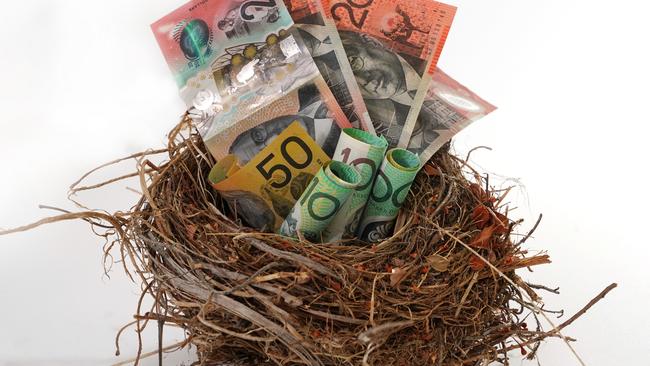Superannuation surge: six ways to boost your balance
Spend an hour or two of your summer break taking a closer look at your nest egg and the rewards may be rich. Here’s what to do.

This is not the traditional holiday for thinking about shiny eggs – that’s more an Easter thing – but a Christmas break can be a great time to polish yours.
Nest eggs of Australians are growing faster thanks to surging stockmarkets and property prices over the past 18 months and increasing employer superannuation contributions.
Average super balances for Aussies aged over 60 are now well above $300,000, and funds are on track for their 10th consecutive year of positive returns – with a 12 per cent gain likely for 2021.
That’s an awesome record, considering super funds are expected to post negative returns every five or seven years. The odds suggest we should expect a fall in the next few years, and be prepared mentally and financially for when it hits.
In the meantime, make hay while the sun shines by understanding some of the strategies and tax benefits that can make your nest egg sparkle.
Just an hour or two spent on your super over summer could deliver you tens of thousands – perhaps hundreds of thousands – of extra dollars later in life.
Here are six strategies that can potentially produce huge rewards.
1. SHOW SOME LOVE
Pumping extra cash into super not only grows a nest egg faster – it also boosts tax refunds.
Most Aussies can make tax-deductible contributions of up to $27,500 each year, although this cap includes compulsory employer contributions.
Depositing just $20 a week can compound to $45,000 in 20 years, and $230,000 over 40 years, according to moneysmart.gov.au’s compound interest calculator based on 7 per cent annual returns.
And then there’s a tax refund of up to 47c in the dollar for those personal contributions. Nice.
People will less than $500,000 of super can also make catch-up contributions with unused cap amounts from previous years, potentially delivering greater tax deductions.
2. CASH IN ON CO-CONTRIBUTIONS
Want some free money from the feds?
If you earn less than $56,112 a year and pump $1000 of after-tax money into your super, the government’s co-contribution scheme will add up to $500 of its own money – giving you a potential 50 per cent return on your deposit.
The compound interest benefit of that extra $500 annually is huge, and a co-contribution strategy can work wonders for young and part-time workers, perhaps with some parental help.

3. TWEAK YOUR INVESTMENT MIX
Going for growth has been a winning strategy over the past decade, but many people hold their super in a fund’s default option that may be lower-risk, lower-reward.
For example, most default funds hold a portion in bonds, a fixed interest investment that fell this year and is expected to fall again in 2022 as interest rates rise.
People with decades before retirement can afford to put most of their super into higher-growth assets like shares and property, as long as they understand there will be times when those asset prices fall sharply and don’t panic when it happens.
Remember that any future stockmarket crash or correction will deliver opportunities to buy the same assets at discounted prices.
4. COUPLE COMBINATIONS
Half of your super – or more – can be taken by your spouse if you break up, so you may as well treat both partner’s balances as the same asset (which you both, of course, will enjoy lovingly together for the rest of your lives).
This opens up opportunities to make the most of tax and super rules and incentives.
For example, if your spouse earns less than $40,000 a year and you contribute $3000 or more into their super, you get up to $540 free from the government in the form of a tax offset.
Spouses are often urged by financial planners to equalise their super balances, particularly as they get larger, to give them greater wiggle room with caps and other rules.
And if there’s a big age gap in a couple, an older partner can potentially get an age pension if more money is held in the younger partner’s fund where it’s not assessed by Centrelink tests.
5. ELIMINATE CAPITAL GAINS TAX
Once you reach age 60 and switch your money from super’s accumulation phase to its retirement phase, all income, capital gains and withdrawals generally become tax-free.
This tax rule can be cleverly used by people who use self-managed super funds to own an investment property, shares or other investments. Instead of paying a fortune in tax on the eventual sale of a large asset, their CGT bill could be zero.
It requires strategic long-term thinking, while also making sure your overall super assets are diversified.
6. LIFE INSURANCE SAVINGS
Holding life insurance – such as death and disability cover – inside super can free up cash because the premiums come out of your super instead of your bank account, but understand that it will eat into your nest egg.
While insurance is vital for younger families, older people can reconsider their cover if their mortgage is repaid and school fees are finished, especially if they have other emergency funding sources.





